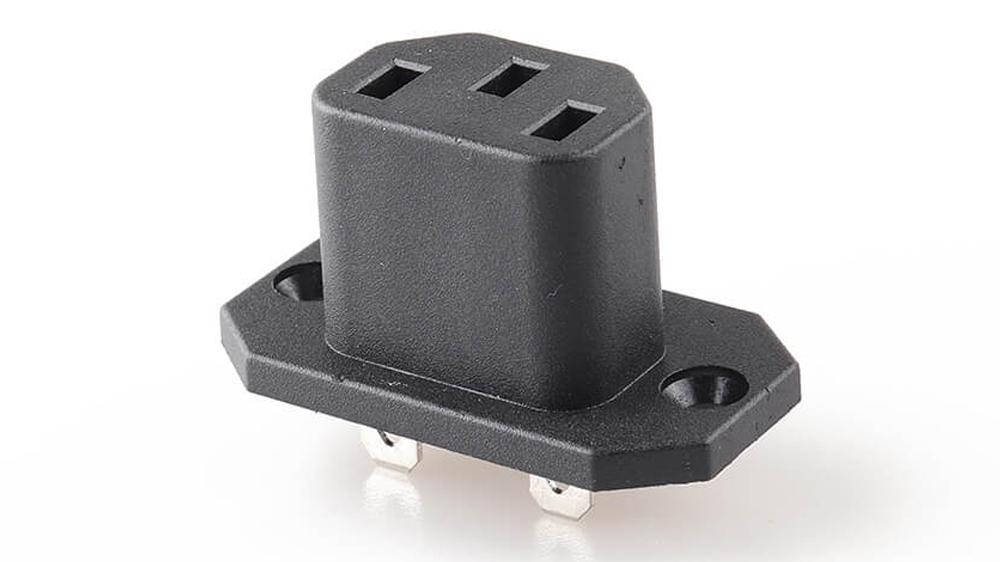Among the most common types used in data centers, offices, and household electronics are the C13 and C14 power cords. While they look similar at first glance, there are key differences that determine where and how each type should be used. Understanding the difference between C13 and C14 power cords helps ensure proper compatibility, performance, and safety in any electrical setup.

What is a Power Cord?
A power cord is an electrical cable that connects an appliance or device to a power source. It usually has two ends: a plug that goes into the power outlet and a connector that attaches to the device. Power cords are designed to handle specific voltage and current ratings, which is why choosing the right type is critical.
The International Electrotechnical Commission (IEC) has standardized many types of power cords, making it easier to identify and select the correct one. Two of the most widely recognized connectors in this standard are the C13 and C14.
What is a C13 Power Cord?
A C13 power cord is an IEC 60320 standard connector commonly used in computers, monitors, servers, and networking equipment. It features a female connector with three slots designed to accept the male C14 inlet.
The C13 cord is usually rated for up to 10 amps at 250 volts, making it suitable for a wide range of IT and office devices. Because of its versatility, the C13 is one of the most widely used connectors in modern electronic environments.
What is a C14 Power Cord?
The C14 connector, on the other hand, is the male counterpart to the C13. It has three pins and is designed to plug directly into a C13 inlet. The C14 is commonly found on the back of power distribution units (PDUs), power supplies, and other equipment that provides power to devices.
Similar to the C13, it is rated up to 10 amps at 250 volts. C14 connectors serve as the input side for power delivery, allowing the C13 to connect seamlessly for proper energy transfer.
Differences Between C13 Power Cord and C14 Power Cord
At first glance, C13 and C14 connectors may appear similar, but their differences are clear when looking closely:
- Gender: The C13 is female, while the C14 is male.
- Usage: C13 cords deliver power into a device, while C14 connectors are typically built into equipment as the power inlet.
- Application: The C13 connects to equipment like computers, monitors, and servers, while the C14 is found on PDUs, UPS systems, and power supplies.
- Connection Type: A C13 cord always plugs into a C14 inlet, not the other way around.
In simple terms, the C13 and C14 work together as a pair, with one delivering power and the other receiving it.
What is a C14 to C13 Power Cord?
A C14 to C13 power cord, sometimes referred to as a jumper or extension cord, is designed with a C14 male connector on one end and a C13 female connector on the other. This allows you to extend power from one device, such as a PDU, directly to another piece of equipment like a server or monitor. They are especially popular in data centers where multiple devices need to be powered efficiently while minimizing cable clutter.
How Do You Choose the Right C14 to C13 Power Cable?
Selecting the right C14 to C13 power cable involves evaluating several factors such as current and voltage rating, cable length, build quality, and certification. For instance, the cord should be able to handle up to 10 amps and 250 volts if required. The length should be chosen carefully so that it reaches between devices without leaving unnecessary slack.
Build quality matters as well, since durable insulation and reliable connectors can enhance safety and longevity. Finally, it is best to choose cords that comply with IEC standards and regional safety certifications. By considering these aspects, you can ensure reliability, safety, and compatibility in your setup.
What are the Benefits of Using a C14 to C13 10A 250V Power Extension Cord?
Using a C14 to C13 10A 250V power extension cord offers several benefits:
- Flexibility: Extends power from a PDU or UPS to equipment without requiring extra outlets.
- Efficiency: Simplifies cable management in data centers, reducing clutter and improving airflow.
- Compatibility: Universally used with a wide range of devices, making it a reliable choice for IT infrastructure.
- Safety: Designed to handle up to 10 amps at 250 volts, ensuring safe operation under typical loads.
This makes them an excellent solution for powering servers, networking devices, and other electronics in professional environments.
How to Ensure Safety and Compliance with IEC320 C14 to C13 Power Cords?
For proper usage, choose certified cables that meet IEC320 and local standards. Avoid exceeding the rated capacity of 10A/250V and regularly check for wear, such as frayed insulation or damaged connectors. Proper installation practices—like preventing sharp bends and ensuring secure connections—also reduce the risk of overheating or failures.
Following these measures helps maintain reliable performance while staying compliant with electrical standards.
Conclusion
C13 and C14 power cords are two sides of the same system: one delivers power and the other receives it. The C13 cord is a female connector widely used in computers and servers, while the C14 is the male inlet on power equipment.
Used together, they create a reliable and standardized connection. Choosing and safely using C14 to C13 cords, especially in environments like data centers, helps improve efficiency and safety.
 +86 138-6870-3133
+86 138-6870-3133 sales@lanzmfg.com
sales@lanzmfg.com EN
EN CN
CN Search
Search